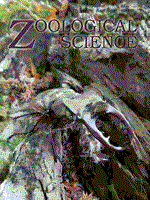Many organisms have the ability to alter their development in the presence of predators, leading to predator-induced defenses that reduce vulnerability to predation. In the water flea Daphnia pulex, small protuberances called ‘neckteeth’ form in the dorsal neck region in response to kairomone(s) released by predatory phantom midges (Chaoborus larvae). Although previous studies suggested that kairomone sensitivity begins when chemoreceptors begin to function during embryogenesis, the exact critical period was unknown to date. In this study, we investigated the period of kairomone sensitivity and the process of necktooth formation in D. pulex through extensive treatments with pulses of kairomone(s). First, we described the time course of embryogenesis, which we suggest should be used as the standard in future studies. We found the kairomone-sensitive period to be relatively short, extending from embryonic stage 4 to postembryonic first instar. We observed cell proliferation and changes in cell structure in response to the kairomone treatment, and propose a model for necktooth formation. Preliminary LiCl treatment suggests the Wnt signaling pathway involved in crest formation as a candidate for the molecular mechanism underlying this process. Our study provides basic insight toward understanding the mechanisms underlying adaptive polyphenism in D. pulex.
How to translate text using browser tools
1 August 2013
Identification of the Precise Kairomone-sensitive Period and Histological Characterization of Necktooth Formation in Predator-induced Polyphenism in Daphnia pulex
Yuka Naraki,
Chizue Hiruta,
Shin Tochinai
ACCESS THE FULL ARTICLE

Zoological Science
Vol. 30 • No. 8
August 2013
Vol. 30 • No. 8
August 2013
Daphnia pulex
kairomone(s)
neckteeth
phenotypic plasticity
polyphenism
predator-induced defense




